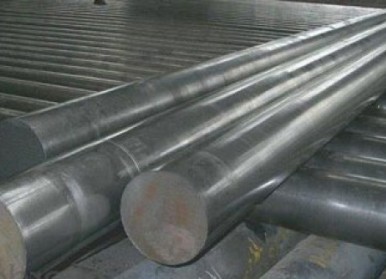-
About
-
Our Brand
-
Products
-
Community
Community
Blog
Blog
Stainless Steel Round Rod: Characteristics, Uses, Pros & Cons
- Writer
- STEELTOPIA
- Date
- 24-08-22

Stainless steel round rods are a versatile and widely used material in various industries, known for their durability, resistance to corrosion, and aesthetic appeal. If you're considering using stainless steel round rods in your projects, here's everything you need to know about their characteristics, uses, pros, and cons.
Characteristics of Stainless Steel Round Rods
1. Material Composition:
Stainless steel round rods are typically made from different grades of stainless steel, including 304, 316, and 410. These grades vary in their chromium, nickel, and molybdenum content, which determines their corrosion resistance, strength, and other properties.
2. Corrosion Resistance:
One of the standout features of stainless steel is its exceptional resistance to rust and corrosion, making it ideal for both indoor and outdoor applications.
3. Strength and Durability:
Stainless steel round rods offer high tensile strength and durability, making them suitable for applications that require structural integrity.
4. Surface Finish:
These rods are available in various surface finishes, including polished, brushed, and mill finishes. The finish can affect both the aesthetic appearance and the corrosion resistance of the rod.
5. Machinability and Weldability:
Stainless steel round rods are generally easy to machine and weld, especially when using the appropriate tools and techniques. Certain grades, like 304, are particularly known for their excellent machinability.
Common Uses of Stainless Steel Round Rods
1. Construction and Architecture:
Used in the construction of buildings, bridges, and other structures due to their strength and corrosion resistance. They are also popular in architectural designs for railings, handrails, and decorative elements.
2. Automotive Industry:
Stainless steel round rods are used in the manufacturing of various automotive parts, including axles, fasteners, and engine components, due to their durability and resistance to heat and corrosion.
3. Marine Applications:
Given their resistance to seawater and marine environments, stainless steel round rods are widely used in shipbuilding, dock construction, and marine hardware.
4. Manufacturing and Fabrication:
These rods are used in the production of machinery, tools, and equipment. Their strength and versatility make them a go-to material for a wide range of manufacturing applications.
5. Medical Equipment:
Due to their biocompatibility and ease of sterilization, stainless steel round rods are used in the production of medical instruments and devices.
Pros of Stainless Steel Round Rods
1. Corrosion Resistance:
Ideal for environments exposed to moisture, chemicals, and extreme temperatures. Stainless steel resists rust and corrosion, ensuring a long lifespan.
2. High Strength:
Offers excellent mechanical properties, providing high strength and durability for structural and load-bearing applications.
3. Low Maintenance:
Requires minimal upkeep due to its resistance to staining and corrosion. A simple cleaning is usually sufficient to maintain its appearance.
4. Aesthetic Appeal:
Stainless steel has a sleek, modern look, making it a popular choice for both functional and decorative purposes.
5. Recyclability:
Stainless steel is 100% recyclable, making it an environmentally friendly material choice.
Cons of Stainless Steel Round Rods
1. Cost:
Stainless steel round rods are generally more expensive than other materials, such as aluminum or carbon steel. This can be a drawback for budget-conscious projects.
2. Weight:
Stainless steel is heavier than materials like aluminum, which might be a disadvantage in applications where weight reduction is critical.
3. Machining Difficulty:
While machinable, stainless steel can be tougher to work with compared to other metals. It requires specialized tools and techniques, which can increase fabrication
costs.
Thermal Conductivity:
Stainless steel has lower thermal conductivity compared to other metals like aluminum or copper, which may not be suitable for heat dissipation applications.
Conclusion
Stainless steel round rods are a versatile and durable material with a wide range of applications across various industries. Their corrosion resistance, strength, and aesthetic appeal make them a top choice for projects requiring long-lasting and reliable materials. However, the higher cost and weight, along with some machining challenges, are factors to consider when deciding if stainless steel round rods are the right fit for your needs.


 HOME
HOME